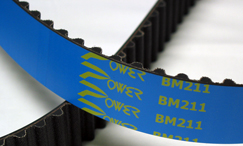Als or Antilag System also known as Bang Bang
As you might be aware, all turbochargers display what is known as lag time which is the time needed for the turbine to reach its full throttle from an intermediate rotational speed state. The duration of a turbocharger's lag depends on many factors among which its inertia, airflow efficiency, back pressure from the inlet manifold when the throttle is closed, etc. This last issue is partly dealt with by fitting a turbo dump valve. This acts each time the driver lifts his foot from the throttle. The dump valve will evacuate the pressurized air coming out of the turbocharger while the inlet manifold is closed thus allowing the turbine not to stall and avoiding possible damage to its bearings. In higher power cars it is very common to fit oversized turbochargers in order to be able to produce enough boost pressure to ensure a sufficient engine output. Big turbochargers display significant amounts of lag due to their increased rotational inertia. This issue can be partly overcome by fitting a lighter (billet) wheel in the housing. Because it is lighter it takes less air force to start it turning and get it up to speed. Additionally rally cars are fitted with a turbo restrictor, which is regulated by the FIA. One of the restrictor' effects is to increase lag time. This is why in racing cars, and more specifically in rally cars, where torque and engine availability are critical performance factors, most applications use anti-lag systems.
During lag time the engine is much less responsive and its output well below nominal. To counter the effect of the turbocharger's lag time drivers used to anticipate the engine's reactions by accelerating well before they would have done in a non-turbo car. Others have used a technique, introduced by the German driver Walter Röhrl, known as "left foot braking" where the driver uses his left foot to brake the car while his right foot accelerates to keep the turbocharger in optimal load. Left foot braking is very hard on the brakes which are put into extreme stress but is very efficient in keeping the turbo spinning.
ALS was a simple idea but one that was relatively difficult to implement. Only when electronic engine management systems were advanced enough to allow taking into consideration many more parameters in real time, it became possible to use them efficiently in handling ALS. To the best of my knowledge Toyota Team Europe were the first to use it in racing (Toyota's implementation is known as Toyota Combustion Control System while Mitsubishi call the system Post Combustion Control System).
How ALS works
When the driver lifts his foot from the gas pedal the ignition timing is altered with sometimes 40° or more of delay (retard) and the intake air and fuel supply mixture is made richer. The inlet butterfly is kept slightly open or an air injector, bypassing the inlet butterfly, is used to maintain air supply to the engine. This results in air/fuel mixture that keeps getting in the combustion chambers when the driver no longer accelerates. The ignition being severely delayed, the air/fuel mixture reaches the exhaust tubes mostly unburned. When the spark plug fires, the exhaust valve is starting to open due to the ignition delay mentioned above. Additionally, the exhaust temperature being extremely high, the unburned fuel explodes at the contact of the exhaust tubes. Luckily the turbo sits right there and the explosion keeps it turning (otherwise it would slow down since its intake, the exhaust gases, is cut-off). The effect is vastly lower response times with some downsides:
* A quick rise of the turbocharger's temperature (which jumps from ~800°C to the 1100°C+ region) whenever the system is activated
* A huge stress on the exhaust manifold and pipes (mounted on a street car a bang-bang system would destroy the exhaust system within 50-100 km)
* The turbo produces significant boost even at engine idle speeds
* The explosions which occur in the exhaust tubes generate important flames which can, sometimes, be seen at the end of the exhaust tube
* Reduced engine brake
The ALS effect is mostly dependent on the quantity of air allowed into the engine, the more air supplied the more the ALS effect will be noticeable. Consequently ALS systems can be more or less aggressive. A mild ALS will maintain a 0 to 0.3 bar pressure in the inlet manifold when activated whereas, when inactive, the pressure in the inlet manifold with the throttle closed would be in the region of -1 bar (absolute vacuum). Racing ALS versions can maintain a pressure of up to 1.5 bar in the inlet manifold with the throttle closed.
While the systems mounted in Toyota and Mitsubishi racing cars are relatively smooth and noiseless those fitted in Ford and Subaru cars are much more noisy and aggressive.
The bang-bang system owns its name to the loud explosion noises one hears whenever the driver lifts off. Most racing implementations have user selectable anti-lag settings depending on the terrain, usually three settings can be selected by the driver going from mild to very aggressive.
Starting in 2002 new anti-lag techniques, such as Exhaust Gas Recirculation (EGR), are slowly overtaking the method described above as they are kinder on the engine's mechanical parts.
ALS was first used in the early days of turbocharged cars in Formula One racing circa mid to late 1980s, until fuel restrictions made its use unsuitable. Later it became a common feature in rally cars because of the increased turbo lag from the mandated restrictors at the turbocharger inlet. Due to the pressure drop across the restriction, the pressure ratio for a given boost level is much higher and the turbocharger must spin much faster to produce the same boost as when the engine operates without restriction. This increases turbo lag significantly compared to unrestricted turbochargers.
An ALS requires an air bypass, generally done in one of two ways. The first method is to use a throttle air bypass; this may be an external bypass valve or a solenoid valve which opens the throttle 12-20 degrees. This allows air to bypass the closed throttle and to reach the engine. The second method is to use a bypass valve which feeds charge air directly to the exhaust manifold.
The throttle bypass/throttle solenoid system is combined with ignition retardation and slight fuel enrichment (mainly to provide cooling), typically ignition occurs at 35-45° ATDC. This late ignition causes very little expansion of the gas in the cylinder; hence the pressure and temperature will still be very high when the exhaust valve opens. At the same time, the amount of torque delivered to the crankshaft will be very small (just enough to keep the engine running). The higher exhaust pressure and temperature combined with the increased mass flow is enough to keep the turbocharger spinning at high speed thus reducing lag. When the throttle is opened up again the ignition and fuel injection goes back to normal operation. Since many engine components are exposed to very high temperatures during ALS operation and also high pressure pulses, this kind of system is very hard on the engine and turbocharger. For the latter not only the high temperatures are a problem but also the uncontrolled turbo speeds which can quickly destroy the turbocharger. In most applications the ALS is automatically shut down when the coolant reaches a temperature of 110-115°C to prevent overheating.
An ALS system working with a bypass valve which feeds air directly to the exhaust system can be made more refined than the system described above. Some of the earliest systems of this type were used by Ferrari in F1. Another well-known application of this type of anti-lag system was in the WRC version of the 1995 Mitsubishi Lancer Evolution III and Toyota Celica GT-Four (ST-205). Brass tubes fed air from the turbocharger's Compressor Bypass Valve (CBV) to each of the exhaust manifold tracts, in order to provide the necessary air for the combustion of the fuel. The system was controlled by two pressure valves, operated by the ECU. Besides the racing version, the hardware of the anti-lag system was also installed in the 2500 "Group A homologation base WRC method car" street legal Celica GT-Fours. However, in these cars the system was disabled and inactive. The tubes and valves were only present for homologation reasons. On the Mitsubishi Evolution later series (evo 4-9, JDM models only) the SAS (Secondary Air System) can be activated to provide Antilag.
A method by which a large zero cracking pressure one-way check valve* is inserted just prior to the throttle body, enabling air to bypass the turbo, intercooler, and piping during periods where there is negative air pressure at the throttle body inlet. This results in more air combusting, which means more air driving the turbine side of the turbo. As soon as positive pressure is reached in the intercooler hosing, the valve closes. (*Sometimes referred to as the Dan Culkin valve).
When used in a MAF configuration, the D-valve should draw air through the MAF to maintain proper A/F ratios. This is not necessary in a speed-density configuration.
A method of anti-lag developed along the same technique previously mentioned, but designed only to allow reduction of turbo lag when a car is initially pulling away from a standing start. These systems can be integrated into the engine management or existing anti-lag system, or can be fitted as a standalone unit. The basic method of operation is to artificially lower the engine rev limiter to hold the engine at a speed where the turbo can produce useable boost, by altering the ignition. Because the ignition is alternately cut or retarded, there is similar noise and misfires associated with other anti-lag systems.
Systems for Two Step launch designed to be fitted in addition to the existing engine management work by interrupting the crank position sensor signal, so that the engine develops a controlled misfire at a pre-determined RPM. The basic premise of the launch control system is to build positive boost pressure from a static engine, releasing full or increased power to the wheels when the car starts to move off. It is most commonly used in turbo-charged drag racing, primarily in the US and Japan, although most WRC cars utilise launch control to ensure that the cars can get off the line much more quickly.
Previous:- Blow Off Valves
Next:- Exhausts


























